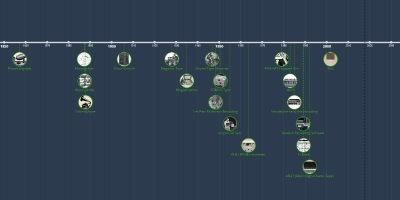19 jan 1955 ano - Ampex Sel Sync
Descrição:
Sel-Sync or Selective Syncronous recording is the process of selectively using audio tape record heads as play back heads so that neew signals can be recorded on other tracks in perfect sync with the existing tracks. Sel-sync recording dramatically changed the recording process allowing overdubbing of individual recorded tracks. Sel-sync along with the multi-track head was invented by Ross Snyder at Ampex in 1955. Three problems had to be solved: mechanical alignment, switching of the record track to playback mode and multitrack erase head. The hard problem was the switching of a track between record and playback mode, as the impedance of the record heads are quite different from the impedance of playback heads. Prior to sel-sync record heads were directly wired to the record electronics. Also the designs of the two heads were very different. The problem of switching very low-level / high-impedance circuitry without introducing hum or noise had to be solved. Mort Fujii in the Ampex special projects lab was responsible for the actual design. Ampex didn’t patent sel-sync because Ross Snyder did not think it would be of interest to more than a few musicians and an Ampex lawyer said the idea was obvious hence unpatentable. Ampex only trademarked the name. Sel-sync remained an external, add-on function until the AG-440 and later series, wherein sel-sync was intergrated into every electronics, although for obvious reasons Sel-sync is only useful with multi-track machines. D-2 was the first digital recording video tape format to offer sel-sync read before write (also known as preread) on Sony magnetic tape recorders.Adicionado na linha do tempo:
Data:
19 jan 1955 ano
Agora
~ 70 years ago
